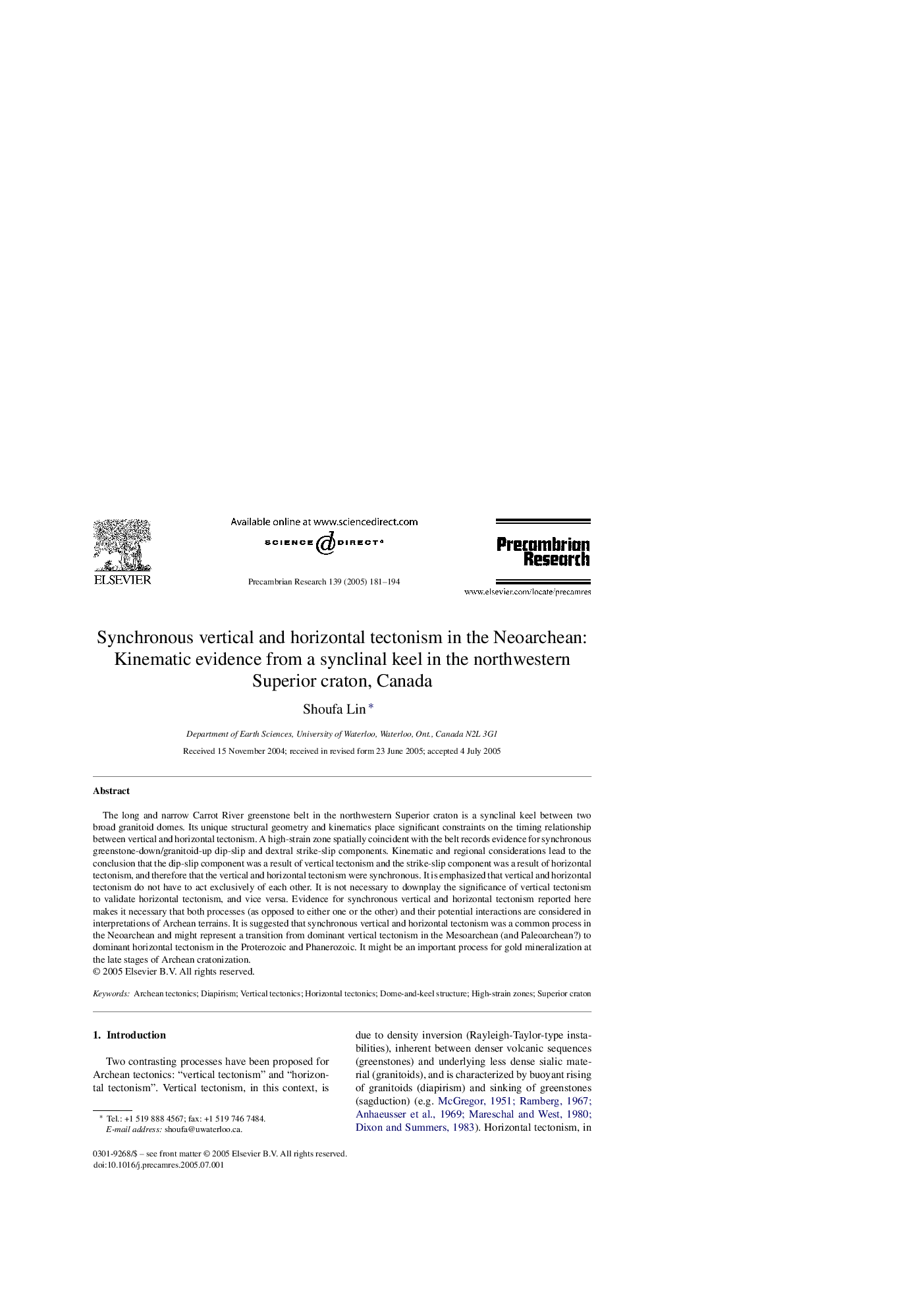| Article ID | Journal | Published Year | Pages | File Type |
|---|---|---|---|---|
| 9533554 | Precambrian Research | 2005 | 14 Pages |
Abstract
The long and narrow Carrot River greenstone belt in the northwestern Superior craton is a synclinal keel between two broad granitoid domes. Its unique structural geometry and kinematics place significant constraints on the timing relationship between vertical and horizontal tectonism. A high-strain zone spatially coincident with the belt records evidence for synchronous greenstone-down/granitoid-up dip-slip and dextral strike-slip components. Kinematic and regional considerations lead to the conclusion that the dip-slip component was a result of vertical tectonism and the strike-slip component was a result of horizontal tectonism, and therefore that the vertical and horizontal tectonism were synchronous. It is emphasized that vertical and horizontal tectonism do not have to act exclusively of each other. It is not necessary to downplay the significance of vertical tectonism to validate horizontal tectonism, and vice versa. Evidence for synchronous vertical and horizontal tectonism reported here makes it necessary that both processes (as opposed to either one or the other) and their potential interactions are considered in interpretations of Archean terrains. It is suggested that synchronous vertical and horizontal tectonism was a common process in the Neoarchean and might represent a transition from dominant vertical tectonism in the Mesoarchean (and Paleoarchean?) to dominant horizontal tectonism in the Proterozoic and Phanerozoic. It might be an important process for gold mineralization at the late stages of Archean cratonization.
Related Topics
Physical Sciences and Engineering
Earth and Planetary Sciences
Geochemistry and Petrology
Authors
Shoufa Lin,
